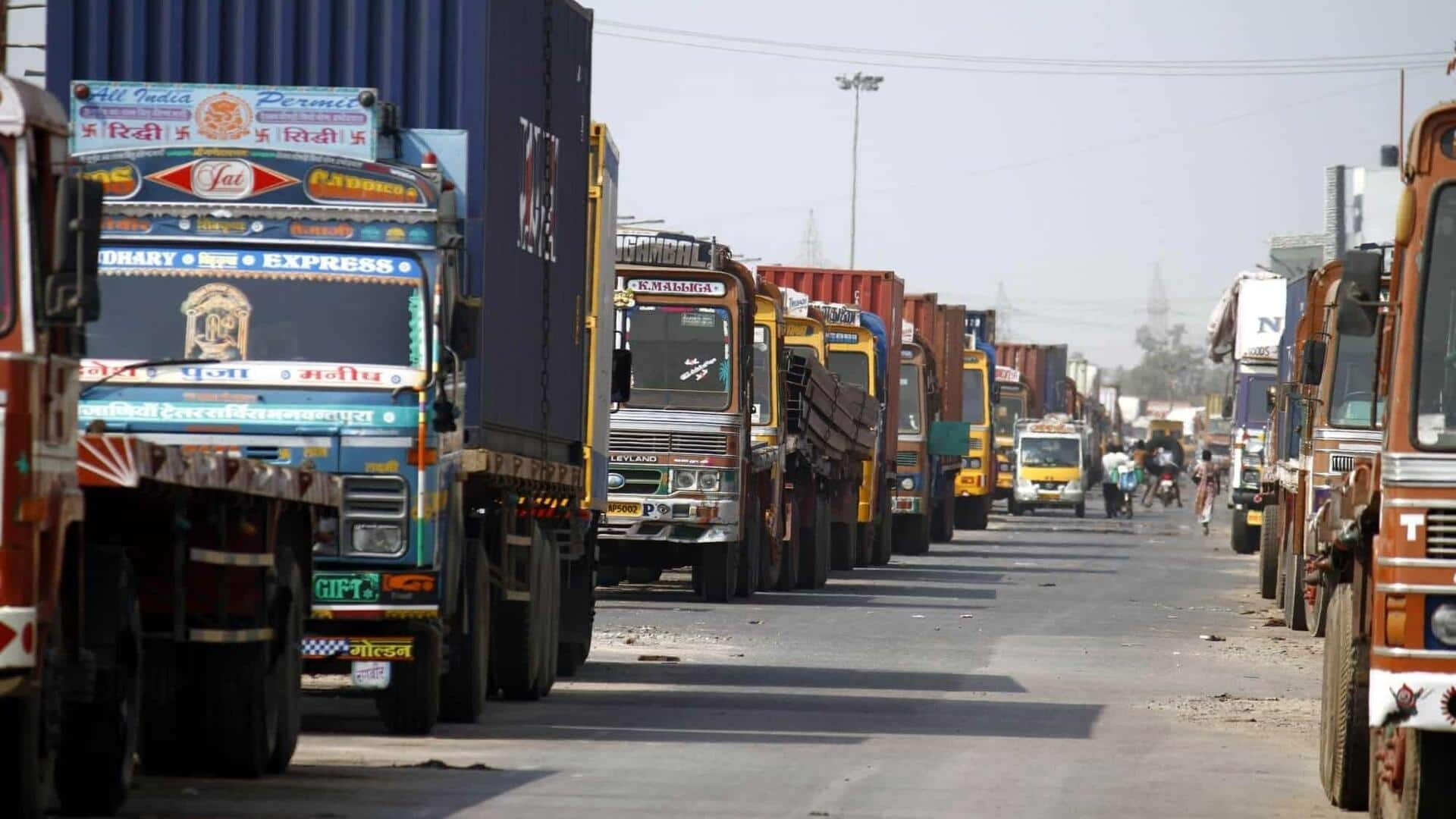
Delhi bans non-BS VI outside commercial trucks from November 1
What's the story
Delhi will impose a ban on the entry of non-BS-VI commercial goods vehicles registered outside the city from November 1. The decision was taken by the Commission for Air Quality Management in National Capital Region and Adjoining Areas (CAQM) to tackle worsening air pollution. The move is part of the Graded Response Action Plan (GRAP) aimed at curbing vehicular emissions during winter's high-pollution season.
Emission standards
CAQM issues statutory direction
The CAQM's decision follows an amendment to its directions under the National Capital Region and Adjoining Areas framework. It aims to reduce emissions from diesel-powered freight carriers that contribute significantly to Delhi's deteriorating air quality. The official notification states, "The Commission with a view to abate air pollution caused by high volume of transport/commercial goods vehicles entering into Delhi...issued Statutory Direction No. 88 dated 23.04.2025."
Exemption details
Exemptions and alternative measures
The public notice also states that there will be no restrictions on the entry of Delhi-registered commercial goods vehicles, BS-VI diesel vehicles, or BS-IV diesel vehicles until October 31, 2026, as a transitional measure. CNG, LNG, and electric goods vehicles are fully exempt as they are considered environmentally safer alternatives. The new rule will work alongside existing measures under the Graded Response Action Plan (GRAP), a pollution-control framework that activates specific restrictions depending on the severity of air quality levels.
Pollution control
Broader strategy to tackle emissions
The decision stems from a CAQM meeting held on October 17, where the panel approved a comprehensive ban on polluting freight vehicles entering Delhi during the high-pollution season, which typically begins in late October. The measure is part of a broader strategy to tackle emissions from multiple sources, including road transport, construction dust, and biomass burning. Every year as winter approaches, Delhi witnesses a sharp spike in air pollution levels, turning its skyline into a gray haze.
Pollution crisis
Factors contributing to Delhi's pollution crisis
The drop in temperature, combined with stagnant wind movement, traps pollutants close to the surface, worsening air quality. Vehicular emissions, industrial activities, and the seasonal burning of crop residue in neighboring states contribute significantly to the toxic smog that blankets the city. This recurring pollution crisis often pushes the Air Quality Index (AQI) into the severe category, prompting emergency measures under GRAP.